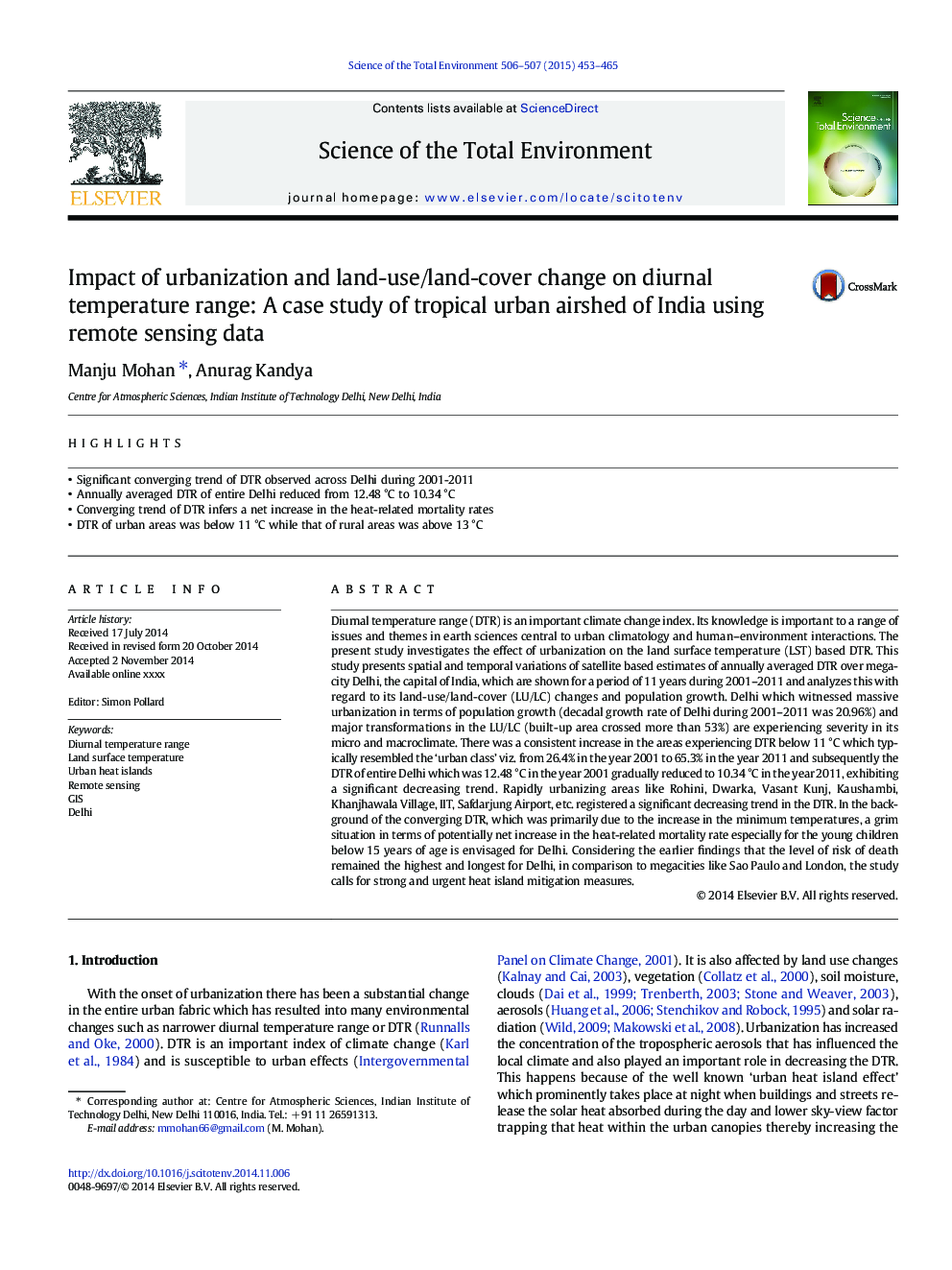| کد مقاله | کد نشریه | سال انتشار | مقاله انگلیسی | نسخه تمام متن |
|---|---|---|---|---|
| 6327751 | 1619769 | 2015 | 13 صفحه PDF | دانلود رایگان |
عنوان انگلیسی مقاله ISI
Impact of urbanization and land-use/land-cover change on diurnal temperature range: A case study of tropical urban airshed of India using remote sensing data
ترجمه فارسی عنوان
تأثیر شهرنشینی و تغییر کاربری زمین / زمین در محدوده دما روزانه: مطالعه موردی شهر هوای گرمسیری هند با استفاده از داده های سنجش از راه دور
دانلود مقاله + سفارش ترجمه
دانلود مقاله ISI انگلیسی
رایگان برای ایرانیان
کلمات کلیدی
موضوعات مرتبط
علوم زیستی و بیوفناوری
علوم محیط زیست
شیمی زیست محیطی
چکیده انگلیسی
Diurnal temperature range (DTR) is an important climate change index. Its knowledge is important to a range of issues and themes in earth sciences central to urban climatology and human-environment interactions. The present study investigates the effect of urbanization on the land surface temperature (LST) based DTR. This study presents spatial and temporal variations of satellite based estimates of annually averaged DTR over megacity Delhi, the capital of India, which are shown for a period of 11 years during 2001-2011 and analyzes this with regard to its land-use/land-cover (LU/LC) changes and population growth. Delhi which witnessed massive urbanization in terms of population growth (decadal growth rate of Delhi during 2001-2011 was 20.96%) and major transformations in the LU/LC (built-up area crossed more than 53%) are experiencing severity in its micro and macroclimate. There was a consistent increase in the areas experiencing DTR below 11 °C which typically resembled the 'urban class' viz. from 26.4% in the year 2001 to 65.3% in the year 2011 and subsequently the DTR of entire Delhi which was 12.48 °C in the year 2001 gradually reduced to 10.34 °C in the year 2011, exhibiting a significant decreasing trend. Rapidly urbanizing areas like Rohini, Dwarka, Vasant Kunj, Kaushambi, Khanjhawala Village, IIT, Safdarjung Airport, etc. registered a significant decreasing trend in the DTR. In the background of the converging DTR, which was primarily due to the increase in the minimum temperatures, a grim situation in terms of potentially net increase in the heat-related mortality rate especially for the young children below 15 years of age is envisaged for Delhi. Considering the earlier findings that the level of risk of death remained the highest and longest for Delhi, in comparison to megacities like Sao Paulo and London, the study calls for strong and urgent heat island mitigation measures.
ناشر
Database: Elsevier - ScienceDirect (ساینس دایرکت)
Journal: Science of The Total Environment - Volumes 506â507, 15 February 2015, Pages 453-465
Journal: Science of The Total Environment - Volumes 506â507, 15 February 2015, Pages 453-465
نویسندگان
Manju Mohan, Anurag Kandya,
